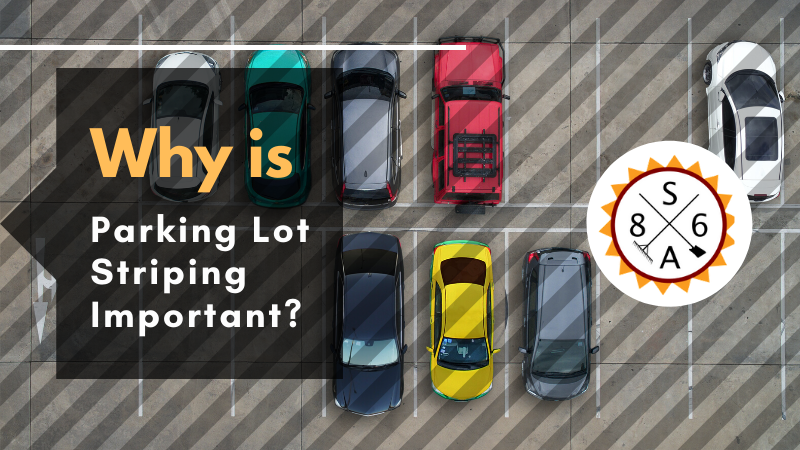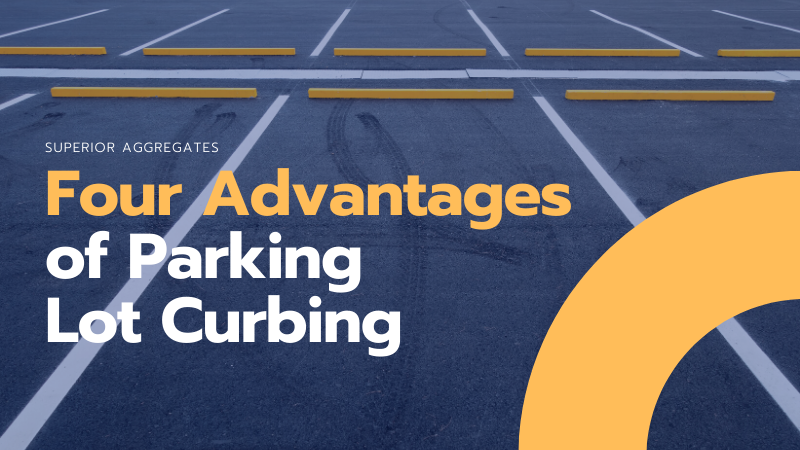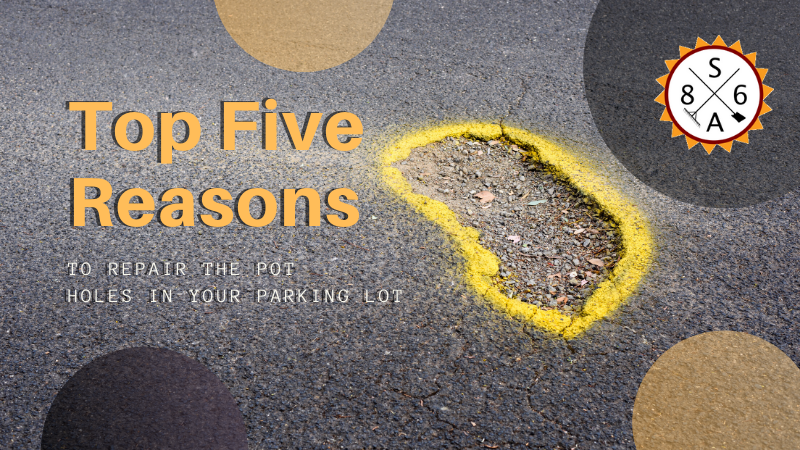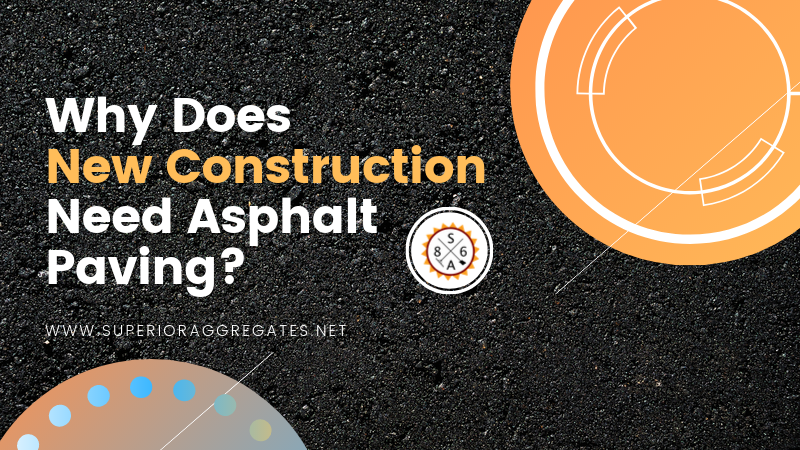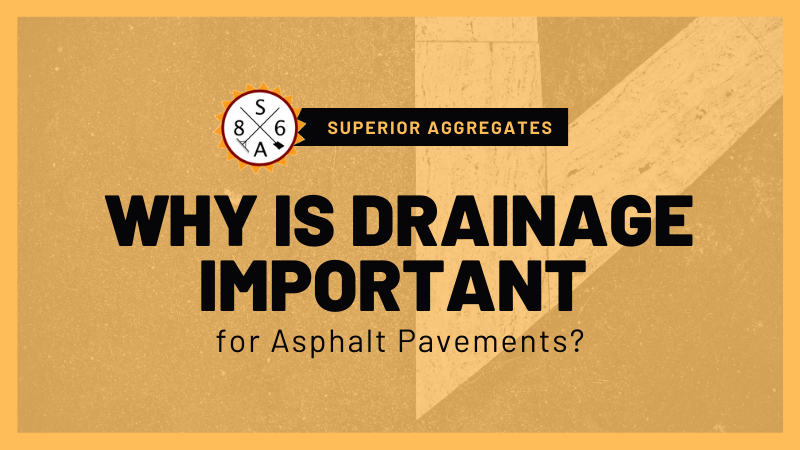
Why Is Drainage Important for Asphalt Pavements?
If you’re planning on building a parking lot or sidewalk, one of the most important things that you need to consider is drainage. Unfortunately, this is often overlooked because it’s not something you can see when you look at a parking lot. Water is the number one culprit in deteriorating asphalt, but with proper planning, you can avoid water damage and deterioration, and ensure the longevity of your site.
Warning Signs of Poor Drainage
If your parking lot has a weak drainage system, it’s pretty evident not too long after your project is complete. If your site has poor drainage after completion, a few of the warning signs you may experience include:
- Stagnant water pooling in areas, and running down the lot
- Evidence of rock, sand, or dusty residue in low spots indicated that the water is breaking down the asphalt
- Water coming through exterior walls and structures
What happens if your site doesn’t include drainage?
Without proper drainage, the longevity of your site and structure will decrease rapidly. Poor drainage can lead to damaged exterior walls, cars, pedestrians, infect local water resources, and penetrate the asphalt’s surface. As standing water penetrates the asphalt, it gets into the subsoil and weakens the base causing cracks. If you want to ensure that your pavement is durable and longlasting, make sure that your asphalt company incorporates appropriate drainage planning into your project.
Drainage Features for Consideration During Planning
When planning proper drainage for your asphalt paving project, there are a few features that you need to take into consideration for your install. Your asphalt company should be able to provide you with an analysis and assessment of your site and present you with the best drainage options for your particular needs. Here are a few areas of consideration that your asphalt company will address during planning.
Slope
If your site is level and prime for pooling water, your planning should include creating a hill. A slight slope (2% grade) in your parking lot or sidewalk allows the water to flow to the outside and not pool in the middle.
Water Direction
Your drainage system should be designed to direct the water away from the exterior walls and create a path to exit appropriately. You need to make sure that water has a place to go that isn’t in your parking lot!
Asphalt Curbing
Including curbing in your planning and design can help you direct water into grassy areas, by providing a tunnel through the curb line. At the end of the curb line, you’ll have installed a drainage point.
Drains & Inlets
Strategically placing drains and inlets around your site gives water an appropriate place to go. Drains and inlets work well with slopes, directing contaminated water.
Pollution Control
Water coming out of parking lots and sidewalks can pick up a variety of pollutants as it flows through your site. Proper drainage planning includes consideration of where the water’s final destination is. It should be in a place that will not infect the water system and disposed of appropriately.
Planning the construction of a parking lot or sidewalk can be a lot of work, but unless you want to deal with numerous maintenance issues like cracks and breaks, make sure that drainage planning is part of your process before your asphalt pavers show up. Not only will it save you a ton of money in upkeep, but it ensures that your investment is built to last and endure for the longterm.
If you’re planning on building a parking lot or sidewalk, one of the most important things that you need to consider is drainage. Unfortunately, this is often overlooked because it’s not something you can see when you look at a parking lot. Water is the number one culprit in deteriorating asphalt, but with proper planning, you can avoid water damage and deterioration, and ensure the longevity of your site.
Warning Signs of Poor Drainage
If your parking lot has a weak drainage system, it’s pretty evident not too long after your project is complete. If your site has poor drainage after completion, a few of the warning signs you may experience include:
- Stagnant water pooling in areas, and running down the lot
- Evidence of rock, sand, or dusty residue in low spots indicated that the water is breaking down the asphalt
- Water coming through exterior walls and structures
What happens if your site doesn’t include drainage?
Without proper drainage, the longevity of your site and structure will decrease rapidly. Poor drainage can lead to damaged exterior walls, cars, pedestrians, infect local water resources, and penetrate the asphalt’s surface. As standing water penetrates the asphalt, it gets into the subsoil and weakens the base causing cracks. If you want to ensure that your pavement is durable and longlasting, make sure that your asphalt company incorporates appropriate drainage planning into your project.
Drainage Features for Consideration During Planning
When planning proper drainage for your asphalt paving project, there are a few features that you need to take into consideration for your install. Your asphalt company should be able to provide you with an analysis and assessment of your site and present you with the best drainage options for your particular needs. Here are a few areas of consideration that your asphalt company will address during planning.
Slope
If your site is level and prime for pooling water, your planning should include creating a hill. A slight slope (2% grade) in your parking lot or sidewalk allows the water to flow to the outside and not pool in the middle.
Water Direction
Your drainage system should be designed to direct the water away from the exterior walls and create a path to exit appropriately. You need to make sure that water has a place to go that isn’t in your parking lot!
Asphalt Curbing
Including curbing in your planning and design can help you direct water into grassy areas, by providing a tunnel through the curb line. At the end of the curb line, you’ll have installed a drainage point.
Drains & Inlets
Strategically placing drains and inlets around your site gives water an appropriate place to go. Drains and inlets work well with slopes, directing contaminated water.
Pollution Control
Water coming out of parking lots and sidewalks can pick up a variety of pollutants as it flows through your site. Proper drainage planning includes consideration of where the water’s final destination is. It should be in a place that will not infect the water system and disposed of appropriately.
Planning the construction of a parking lot or sidewalk can be a lot of work, but unless you want to deal with numerous maintenance issues like cracks and breaks, make sure that drainage planning is part of your process before your asphalt pavers show up. Not only will it save you a ton of money in upkeep, but it ensures that your investment is built to last and endure for the longterm.

